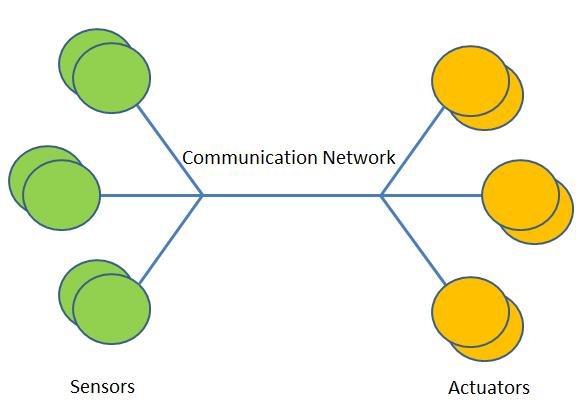SSZTBG8 March 2016 MSP430FR5969
Damian Szmulewicz
Automation systems are becoming increasingly popular and important in buildings of all sizes and complexity levels. Convenience, safety and energy efficiency are key factors driving the need for intelligent monitoring and control of home and building products. From lighting and window blind controls to complex heating, ventilation and air conditioning (HVAC) units and energy metering/management systems, residential and commercial buildings are being equipped with smarter automation solutions. This trend is driving manufacturers all around the world to release thousands of products for this market every year.
A typical building automation system is composed of three main components: sensors, a communication channel and actuators.

A set of sensors collect and process data from the environment and, based on this sensory information, a message is sent through a communication channel to a different part of the network where an actuator takes action.
Consider a safety system that is composed of smoke detectors, intrusion sensors and an alarm. Whenever smoke is detected or if someone invading a home, the alarm receives a message and makes a loud sound. It is essential that the alarm is able to “understand” the messages received from both -smoke and intrusion- detectors. Imagine what would happen if the smoke detector from manufacturer A is using communication protocol A, while the intrusion sensor from manufacturer B is using communication protocol B. How could the alarm be able to understand both? Furthermore, what if there are hundreds of sensor manufacturers each using a proprietary communication protocol? It is clear that a common “language” among all automation components is essential for their interoperability. This is where KNX software becomes relevant. The KNX communication protocol enables the interoperability of building automation devices regardless of the manufacturer, product line or even core function. With KNX, communication between all interconnected devices is possible. For instance, a light switch is able to not only talk to a light bulb, but also to smoke detectors, window blind controls and any other connected device.
In this kind of communication, data security and reliability are critical. An MSP430FR5969 microcontroller (MCU) with non-volatile FRAM technology embedded on-chip enables the following features:
- Protection against replay (playback) attacks by using non-volatile sequence counters that increments on every frame reception.
- Secure storage of a factory device set up key (FDSK) and all secure keys established during configuration using the memory protection unit (MPU).
- Encryption of KNX network traffic with the hardware AES accelerator.
- Fast writes to non-volatile memory after each frame reception reduce the risk of losing telegrams.
- Low-energy storage of critical data upon power down detection to save current state of device.
Take a thermostat, as an example, where FRAM technology is impactful. Even the most basic thermostats in the market today enable users to create different temperature profiles for energy saving purposes. By constantly logging user settings as well as the most recent system status in non-volatile memory, MSP430™ microcontrollers with embedded FRAM technology can effectively restore proper operation after a power down scenario to achieve a low-energy consumption system and to guarantee user comfort.
To learn more about this thermostat example, download our new TI Design reference design: Wired KNX Thermostat Reference Design.
For more information on how KNX systems can benefit from MCUs with FRAM technology, read this article from KNXToday.com.